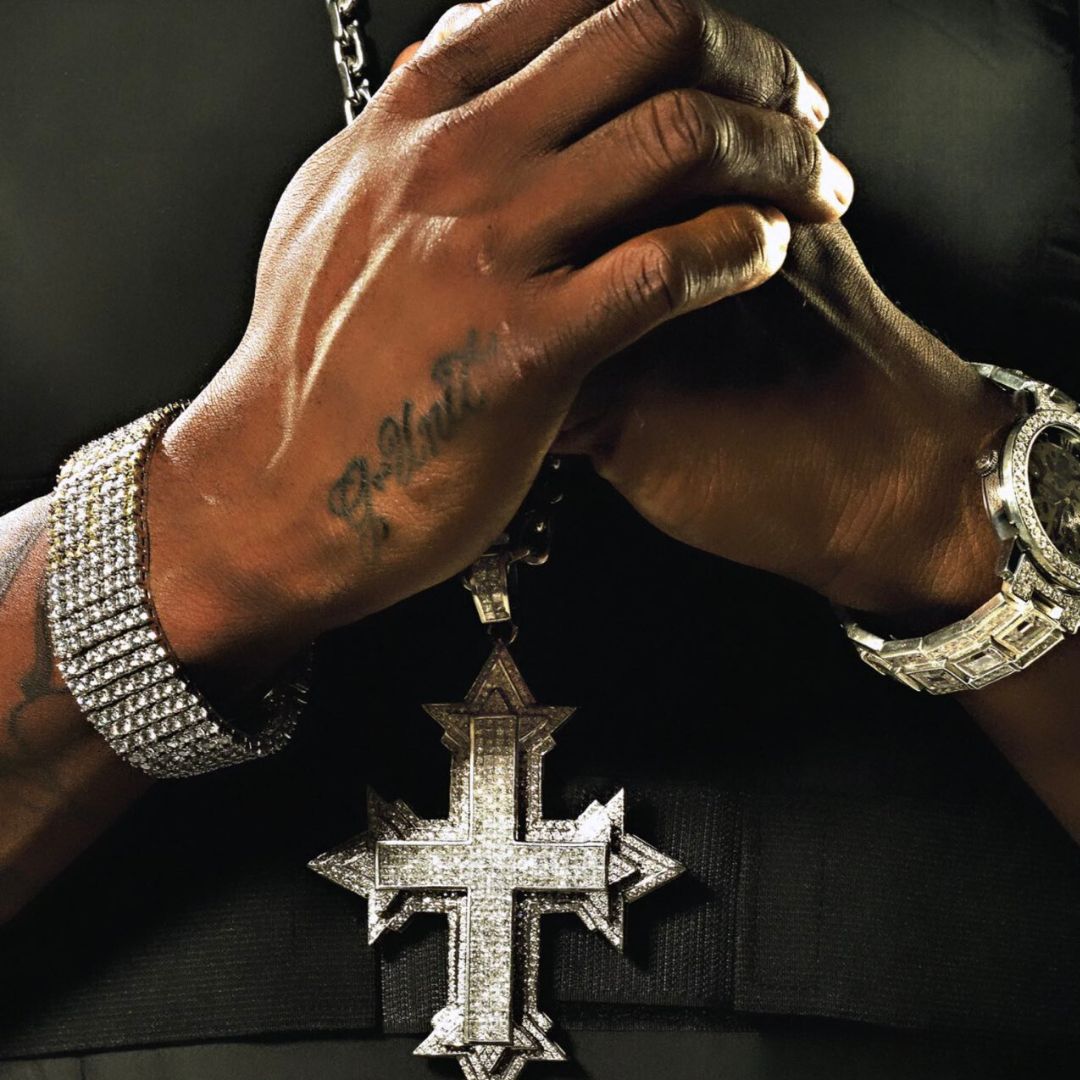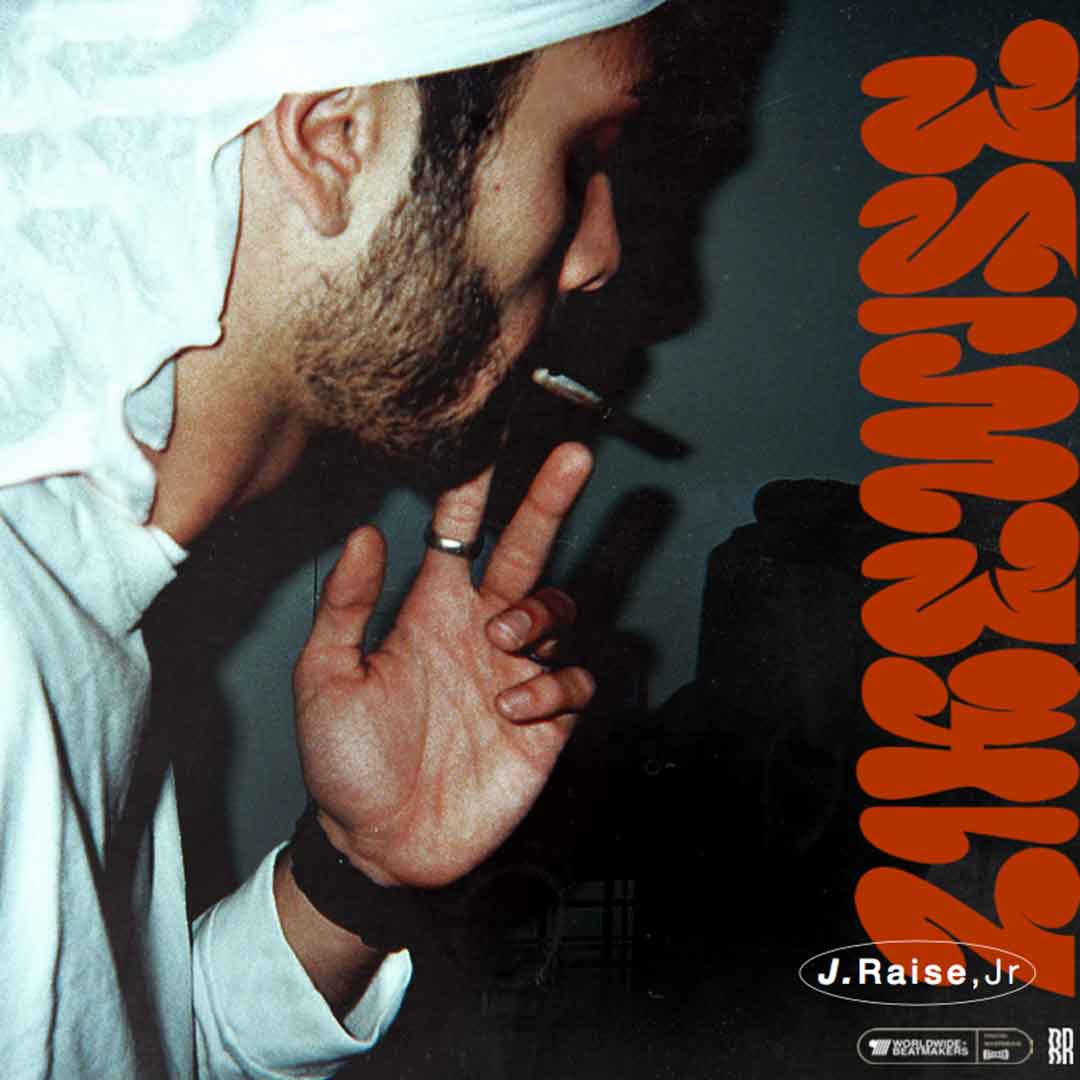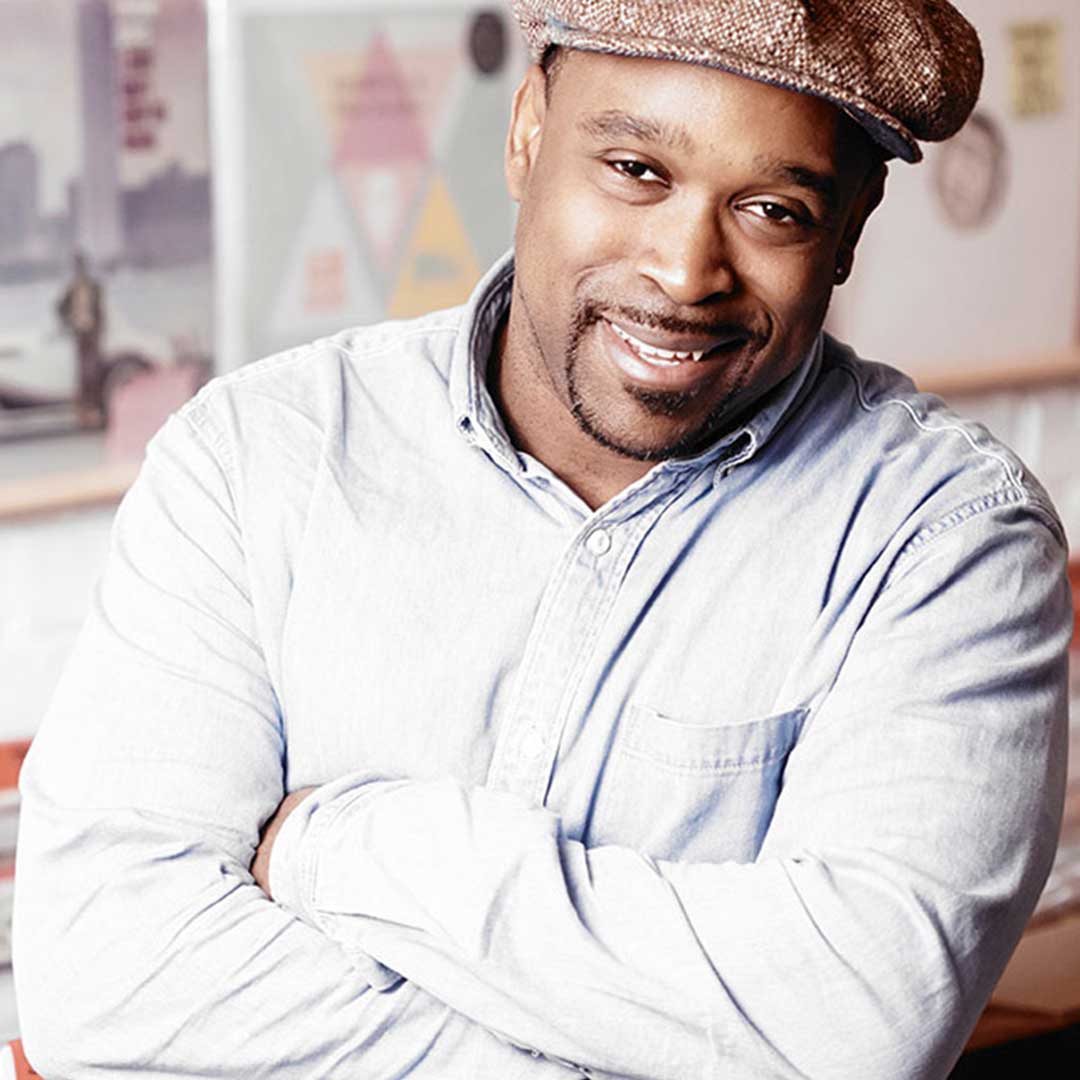Hip-Hop and Religion? You’re tripping.
Long story short, back in 2020, in the middle of the COVID-19 pandemic, I decided to take online courses to pass the time. I found myself in front of a vast choice of diverse topics until I found a course called “Religion and Hip Hop Culture”, by Dr Anthony B. Pinn and Bun B (yup, THAT Bun B) at Rice University.
From then on, my perspective on Hip-Hop and Religion changed forever. It gave me deeper insights into what seemingly may sound like an oxymoron, the spiritual meeting the secular and trivial, but in reality, this is much more complex. Let me put you on the game.
Enter Dr Pinn and Bun B, Professors Extraordinaire
A college course where you dissect rhymes and analyze religious texts. Yes. That’s exactly what went down at Rice University when Dr. Anthony B. Pinn, a religious studies professor with a past life as a Christian theologian (now a non-theistic humanist), and Bun B, the legendary rapper from UGK, joined forces to teach a course titled “Hip-Hop and Religion.”
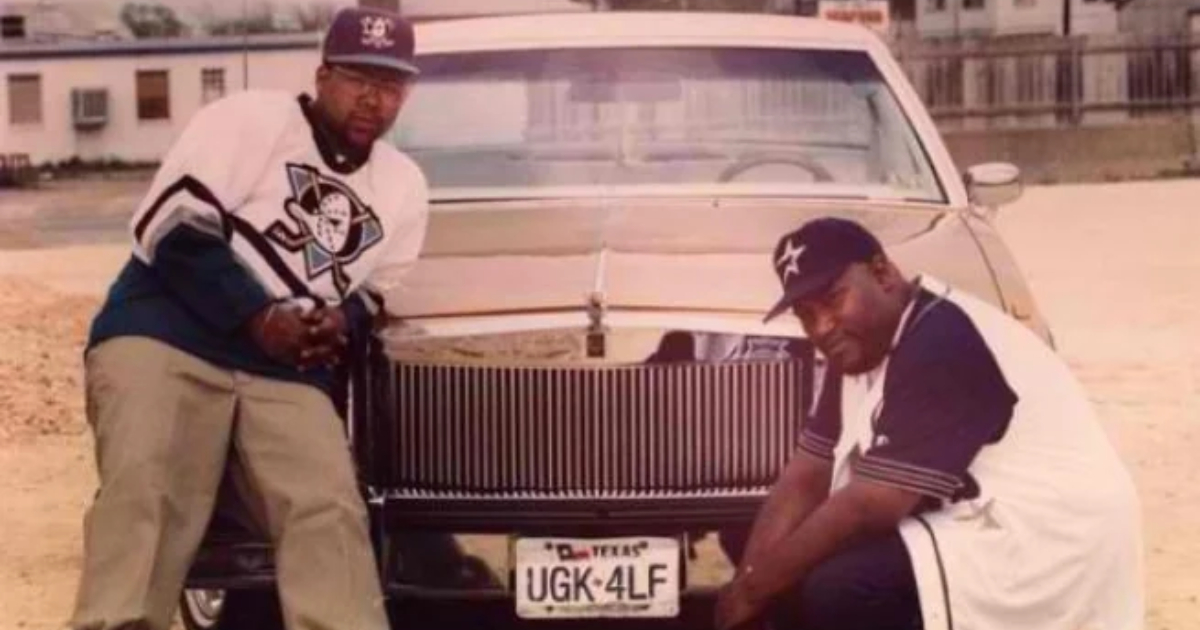
Pimp C and Bun B, known as UGK, 1994
Now, this wasn’t just about dropping beats and learning about holy books. Sure, getting students schooled up on both Hip-Hop and Religion was part of the plan. But the bigger picture? Sharpening those critical thinking skills.
Dr. Pinn put it this way: “I’ve been a professor for over two decades, but a hip-hop fan way longer. It just made sense to bring this cultural force I love into the classroom. People often see hip-hop as just flashy cars and braggadocio, missing its depth. Once you see that complexity, it’s easier to understand why it deserves a spot in college courses.”
In other words, this class wasn’t just about learning the history of hip-hop or the finer points of religious doctrine. It was about using both to ask tough questions, demand good answers, and see the world in a whole new way.
Dr Pinn and Bun B don’t shy away from in-depth exploration. Their lectures delve into the ways scripture and religious rhetoric find their way into hip-hop. From Kanye West’s allusions to Jesus to Pastor Troy’s name itself, the course explores these connections. The professors even delve into the Wu-Tang Clan’s use of Five-Percenter lingo, with terms like “Son,” “God,” and “Peace” becoming ingrained in the group’s vocabulary.
While the on-campus course offered a unique experience, its reach was limited by classroom size. Recognizing this, Rice University took a groundbreaking step. They offered the class online, completely free of charge to lure in lifelong learners, which is how yours truly got in.
Hip-Hop and Religion Through a Complex Lens
Regardless of whether you’re a die-hard Hip-Hop fan, someone who can’t stand the genre, or simply indifferent, the course was designed to be accessible. This free online format meant that anyone with an internet connection could participate, removing the barriers of time and cost that might have prevented them from attending the on-campus class.
While some might expect a stuffy classroom environment, Dr Pinn’s course on Hip-Hop and Religion dispels that notion with a resounding, “It’s not a listening lab!” This engrossing class delves into the surprising common ground between these seemingly disparate worlds.
“These are two cultural developments that folks generally don’t put together” said Dr Pinn. “They think these two are very different moral and ethical worlds. We wanted to point out that they share a lot. We also wanted to show that Hip-Hop culture has done heavy lifting not only in entertainment; it’s provided strategies for living.”
Students grappled with thought-provoking questions after lectures, videos, and assigned readings. I remember essays prompting to dissect the parallels between Hip-Hop and Religion, like: “How do they offer similar pathways to crafting life’s meaning?” The kicker? The students take charge of their own learning by self-grading these essays.
One captivating concept that resonated deeply with me throughout the course was “complex subjectivity.” Pinn describes this as humanity’s inherent drive to imbue life with meaning. He eloquently states, “Strip away the scriptures, doctrines, creeds, and rituals of religion, and what remains? The enduring human quest for meaning.”
Dr Pinn’s insightful comparison continues: “Hip-Hop, akin to traditional religions, acts as a vessel for meaning-making. It provides a moral compass, a framework for navigating relationships, a way to celebrate triumphs through rituals, and a space to grieve loss. Hip-hop essentially offers a roadmap for navigating life’s complexities.”
It is through this perspective that one can understand how Hip-Hop can, in itself, be a religion, or a vessel to finding meaning in life. In my experience, Hip-Hop has certainly made life meaningful. In 2011, I started dancing and got in contact with Hip-Hop culture, which quite honestly saved my life and helped me deal with mental illness.
Now that we are aware of how these two seemingly different Hip-Hop and Religion worlds collide, we can dive deeper into the history of Holy Hip-Hop.
The Soulful Sound of Struggle: Gospel’s Enduring Legacy
African American history is undeniably marked by pain and hardship. Yet, within this struggle, religion has served as a powerful source of solace and resilience. It’s no surprise then, that gospel music emerged as a vibrant soundtrack to the Black experience, mirroring its constant evolution.
From the soulful spirituals of enslaved people to the rousing anthems of modern choirs, gospel music has resonated with the Black community’s yearning for freedom and equality. Singing hymns offered a space to preserve hope and dreams during a period of immense oppression. As author Maya Angelou once noted, “Gospel music is the weapon of the poor.”
Gospel’s influence extends far beyond its complex harmonies and stirring melodies. At its core lies a profound vulnerability. Traditional hymns, even the oldest ones, confront themes of suffering and despair. While the harsh realities of the times when these lyrics were written may be well-known, it’s crucial to stay connected to their raw emotional core.
Far beyond the church walls, Gospel has served as a foundation for countless other genres, from the pulsating rhythms of R&B to the electrifying energy of Rock and Roll. The story of gospel music is a testament to the enduring power of the human spirit, finding hope and expression even in the face of adversity.
According to Dr. Roy Whitaker, an associate professor of religion at San Diego State University and a self-proclaimed Hip-Hop scholar and fan, the very foundation of Black music in the West, including Hip-Hop, is rooted in religious traditions.
Whitaker, who grew up immersed in the sounds of 1980s and 90s Hip-Hop, argues that this genre, even in its diverse expressions, can be seen as a form of “Holy Hip-Hop.” He suggests it serves a powerful purpose: “reconnecting in despair and in hope to something and/or someone larger than oneself.” This “something” can take many forms, from a higher power to a sense of community and purpose.
Hardship and Harmony: The Christian Rap Appears
The 1970s were a period of profound social and economic upheaval for African Americans in the United States. Following the assassinations of civil rights icons Malcolm X and Martin Luther King Jr., the Black Power movement gained momentum, only to be met by the devastating crack cocaine epidemic that ravaged inner cities.
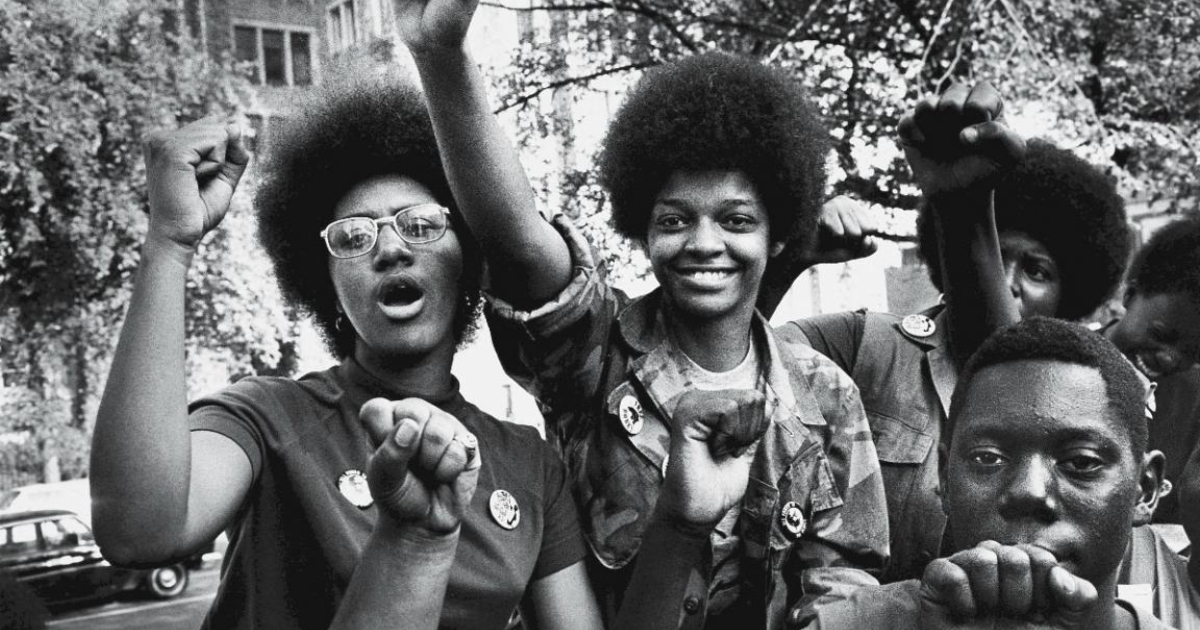
Attendees at the Revolutionary People’s Party Constitutional Convention, Philadelphia, September 1970.
These harsh realities often lead individuals to seek solace and meaning in faith. “Hard times tend to make people evaluate their lives and often seek morality as an escape,” observes cultural commentator Michael D. Many found comfort in religion, using it as a source of strength and guidance during times of anxiety and despair.
This period of social unrest laid the groundwork for the emergence of Christian rap. Young African Americans, raised amidst poverty, violence, and societal disenfranchisement, craved a way to express their struggles and aspirations. They found inspiration in the burgeoning popularity of Hip-Hop, a genre that resonated with their lived experiences. However, traditional Gospel music, with its established sounds and themes, didn’t quite capture the complexities of their reality.
The answer came in the form of Christian rap, a revolutionary fusion of Hip-Hop and Religion in its messages. This new musical form, initially called “Gospel Rap” or “Gospel Hip-Hop,” allowed young artists to speak directly to their communities using the language and rhythms familiar to them. They rapped about faith, hope, and overcoming adversity, offering a message of redemption within a context that resonated with their peers.
Christian rap, with its various monikers like “Christ-hop” and “Holy Hip-hop,” wasn’t simply a rehashing of traditional gospel themes. It served as a powerful tool for a generation grappling with immense challenges. By weaving their faith into the fabric of a vibrant musical genre, these young artists found their voice and offered a message of hope amidst the struggle.
Continuing into 1980’s, Holy Hip-Hop seamlessly blended the electrifying music, rhythmic language (rap), and fashion of Hip-Hop with uplifting and Christian-themed lyrics. This fusion resonated deeply with a generation.
The architects of Holy Hip-Hop were members of the so-called “Hip-Hop Generation,” a diverse group of predominantly Black youth who came of age during a period of significant social and economic change following the Civil Rights Movement. As they explored and embraced Christianity, these young artists found a way to infuse their faith with the artistic expression and energy of hip-hop, transforming their worship experiences. Religion, particularly Islam and the Five-Percent Nation, had already played a role in shaping rap, but Holy Hip-Hop marked the rise of explicit Christian references within the genre, coinciding with the growing mainstream popularity of secular rap.
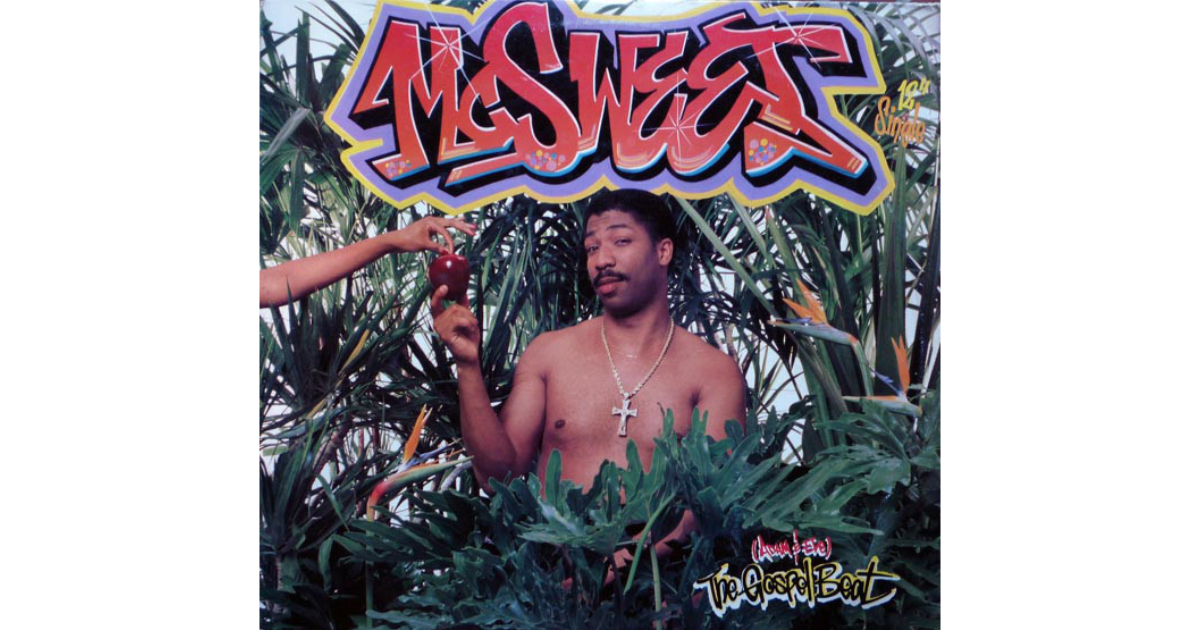
MC McSweet – (Adam & Eve) The Gospel Beat, 1982
Breaking Ground: The Pioneering Artists
The honor of releasing the first commercially available Christian rap record goes to Queens-based MC McSweet. His 1982 album “The Gospel Beat: Jesus-Christ,” released on Lection Records of Polygram, paved the way for a new wave of artists. However, many in the Holy Hip-Hop community credit Oklahoma’s Stephen Wiley with the creation of the first true gospel rap album – 1985’s “Bible Break.” California Christian rapper T-Bone even acknowledged this in his song “Our History,” released on the 2002 album “GospelAlphaMegaFunkyBoogieDiscoMusic.”
Wiley’s message focused on select stories from the Bible, delivered over upbeat R&B-inspired instrumentals. While the title track enjoyed success on Christian radio, some rappers within the scene felt his style lacked the raw, “streetwise” feel that’s often considered an essential element of rap. This debate about artistic expression would continue to shape the future of Holy Hip-Hop, creating a space for artists to explore their faith through the unique lens of the meeting between Hip-Hop and Religion.
This wasn’t a one-off phenomenon, however. The late 1980s witnessed a flourishing of faith-filled rhymes.
The East Coast saw the emergence of New York’s Michael Peace, whose album “Rrrock It Right” (1987) combined streetwise swagger with Christian themes. Dallas’s P.I.D. (Preachers in Disguise) followed suit in 1988, adding clergy collars to their Run DMC-inspired style.
Meanwhile, the West Coast boasted Los Angeles’ S.F.C. (Soldiers for Christ). Their self-produced gospel rap album “Fully Armed” (1987) displayed an eclectic sound, mixing “old school” beats with samples ranging from the Philadelphia soul of Gamble and Huff to the theme song from “Happy Days.” Other notable acts from the LA area like JC and the Boys and L.A. Symphony prioritized their rapping skills over labels, refusing to be pigeonholed as just “Christian rappers.”
1989 marked a turning point with the arrival of DC Talk, a multiracial Christian rap trio whose self-titled debut became a runaway success. They eventually expanded their sound beyond Hip-Hop to encompass rock and pop influences. Sadly, that same year saw the loss of Danny “D-Boy” Rodriguez, a rising star who saw rap as a tool to reach Dallas youth. His murder remains unsolved. His legacy, however, lives on through his foundation of the Street Church Academy and his influence on his sister, M.C. GeGee, the first signed female Christian rap artist.
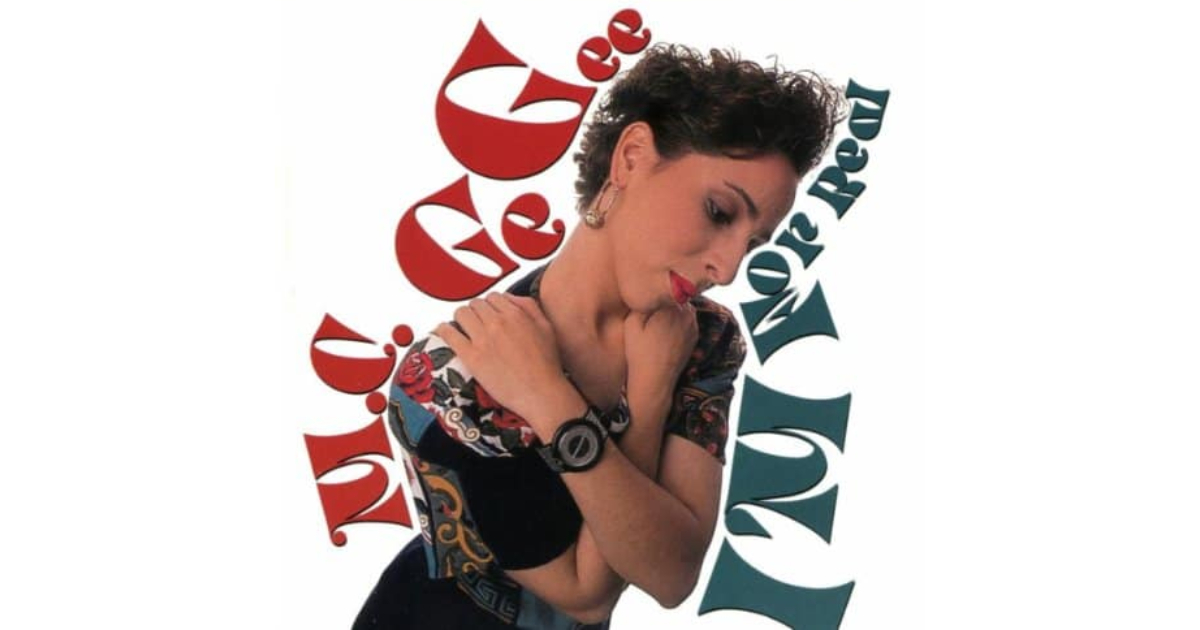
MC GeGee’s first album, I’m For Real, 1990
While Christian Hip-Hop carved its own niche, mainstream rappers like MC Hammer weren’t oblivious to faith. Tracks like “Song of King” (1986) and “Pray” (1990) demonstrated his commitment to incorporating religious themes into his music. Doug E. Fresh’s “All the Way to Heaven” (1986) also touched on spiritual matters, highlighting the early crossover between faith and mainstream Hip-Hop. MC Hammer himself summed up his approach: “He [God] has been very good to me, and never for one minute do I want him to think I’ve forgotten.”
Secular Seeds of Faith: Bone Thugs-n-Harmony
Bone Thugs-n-Harmony, the Cleveland group known for their melodic raps and smooth flow, has also woven their religious beliefs into their music. In an interview with HuffPost Live, Krayzie Bone, Wish Bone, and Flesh-N-Bone revealed the deep influence their faith has had on their lyrics.
“We definitely believe there is a God,” Krayzie Bone shared. “We were raised like that. We’ve always been into that, [and] our parents were. They taught us.” This early foundation in faith has remained a constant throughout their careers.
However, their faith doesn’t shy away from tackling the harsh realities they represent in their music. “We always believed that there was a God and that always had a major effect on the things we write,” Krayzie Bone explained. “Yeah, we talk about some things like the streets and everything, but we were always guided by that, knowing it’s only to make [it] better, it’s only to do better.”
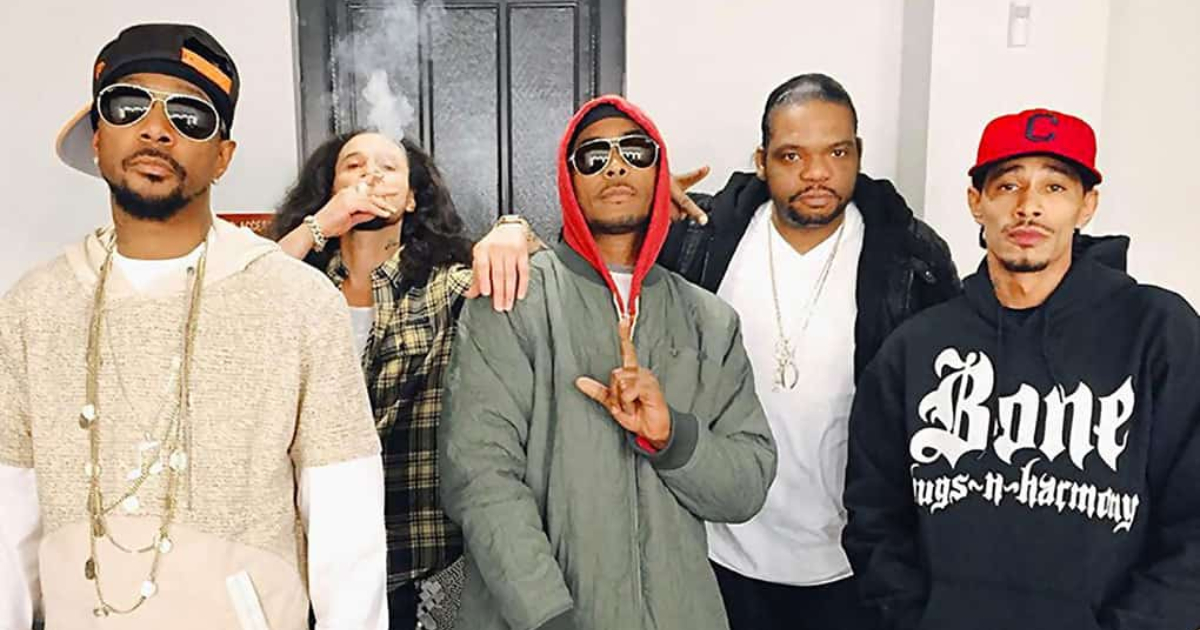
The 5 members of Bone Thugs-N-Harmony, 2018
Bone Thugs-n-Harmony avoids glorifying the street life they depict. “Although we talk about those things that we did on the streets, we always tell both sides — the good side and the bad side,” Krayzie Bone emphasized. “We don’t glorify it, we just let people know what we had to do.”
This honesty, coupled with their musical talent, has garnered them critical acclaim. Throughout their career, Bone Thugs-n-Harmony has received three Grammy nominations, winning one for “The Crossroads,” a song written in memory of their friend and mentor Eazy-E. Their faith and their flow have created a unique sound that continues to resonate with fans.
Bridging the Gap: Hip-Hop and Religion in the Black Church
Hip-hop, born on the streets, wasn’t always seen as a welcome guest in the pews. Yet, Christian themes and symbols began to appear in the music of artists such as Tupac’s “I Wonder If Heaven Got A Ghetto” and Nas’ God’s Son, who weren’t necessarily crafting their music as “Christian rap.” This trend continued, though louder and clearer, with the likes of DMX’s “Lord Give Me a Sign” and, more recently, Kanye West’s “Jesus Walks” and “Jesus is King”, Chance the Rapper, and Kendrick Lamar. These just show how intricate and complicated the relationship between Hip-Hop and Religion is.
This wasn’t just lyrical exploration. Kanye West, known for his colorful language, even launched a series of Sunday ervices with a dedicated choir. DMX, who once faced criticism for his lyrics, found himself rapping about faith after a tumultuous personal life. While some traditional Black churches saw Hip-Hop’s aesthetic as a clash with their worship style, forward-thinking pastors saw an opportunity. Black youth, facing poverty, gang violence, and a sense of alienation, were increasingly disconnected from traditional Black Christianity.
The answer? Ministries began integrating rap music and language into their services. This allowed them to speak to young people in their own tongue, using the music they loved to teach biblical stories, themes, and values. Lyrics focused on the artist’s relationship with God and the importance of living a Christian life. By meeting young people where they were, churches found a new way to spread their message. This gave rise to a wave of independent recordings by local groups, each striving to connect with their communities through the power of rhyme and rhythm.
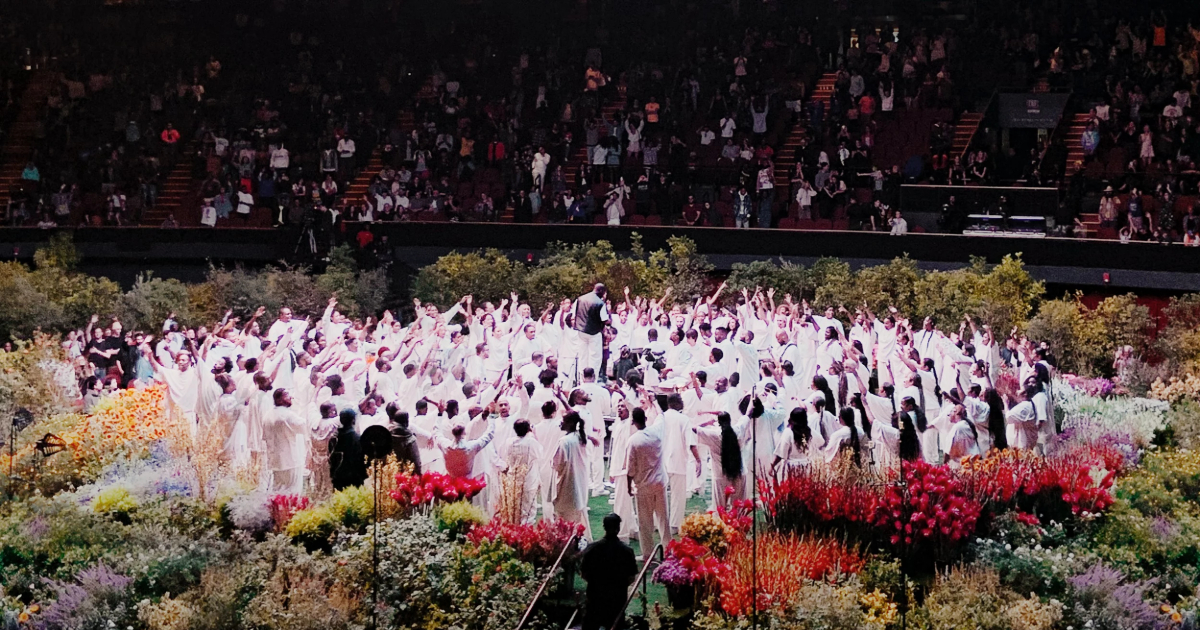
Kanye West’s Sunday Service, 2019
Kirk Franklin: An Architect of Holy Hip-Hop
While many artists experimented with this fusion of Hip-Hop and Religion, it was Kirk Franklin who truly revolutionized the genre. His masterful blend of traditional gospel elements – soaring choirs, rich instrumentals – with rapping, contemporary beats, and even samples from classic funk tracks (like Funkadelic’s “One Nation Under a Groove” in his hit song “Stomp” from 1997) created a sound that resonated deeply. “Stomp” became a landmark track, solidifying Holy Hip-Hop as a distinct style and musical genre within Black churches. Interestingly, some holy Hip-Hop MCs themselves might categorize Franklin’s music as gospel, highlighting the nuanced spectrum within this innovative movement.
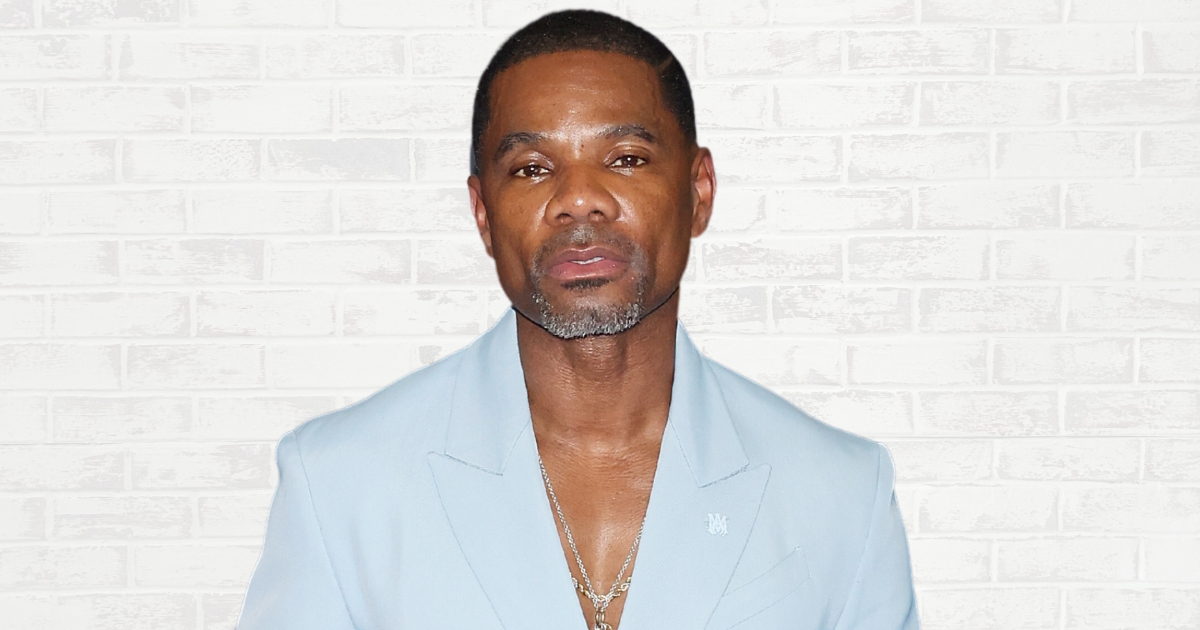
Kirk Franklin, 2023
The impact of Holy Hip-Hop extended far beyond recorded music. The 1990s and early 2000s saw a surge in rap ministries housed within traditional churches, offering a fresh approach to worship services. Additionally, free-standing churches specifically focused on Hip-Hop culture began to emerge. Pioneering figures like Kirk Franklin, who hosted a bi-weekly “Take Over” service at Faithful Central Bible Church in California, led the way. Other notable examples included Crenshaw Christian Center’s “Hip-Hop Sundays” in Los Angeles, Kurtis Blow’s Hip-Hop Church in Harlem, and the Crossover Church in Tampa, Florida. These churches provided a space for young people to connect with their faith through a familiar and relevant artistic expression.
Verses from the Torah and Quran
While Christianity might be the most prominent faith in Hip-hop, other religions have left their mark on the genre.
Jewish rappers like Drake, Action Bronson, El-P, and Lil Dicky have brought their heritage to the forefront. Similarly, Islam has a strong presence in Hip-Hop, with influential figures like Rakim (who sometimes uses the name Rakim Allah), Kevin Gates, Mos Def, and Lupe Fiasco incorporating Islamic themes into their music. Gates even references Quran verses in some of his recent work. These rappers showcase the diversity of religious perspectives within Hip-Hop.
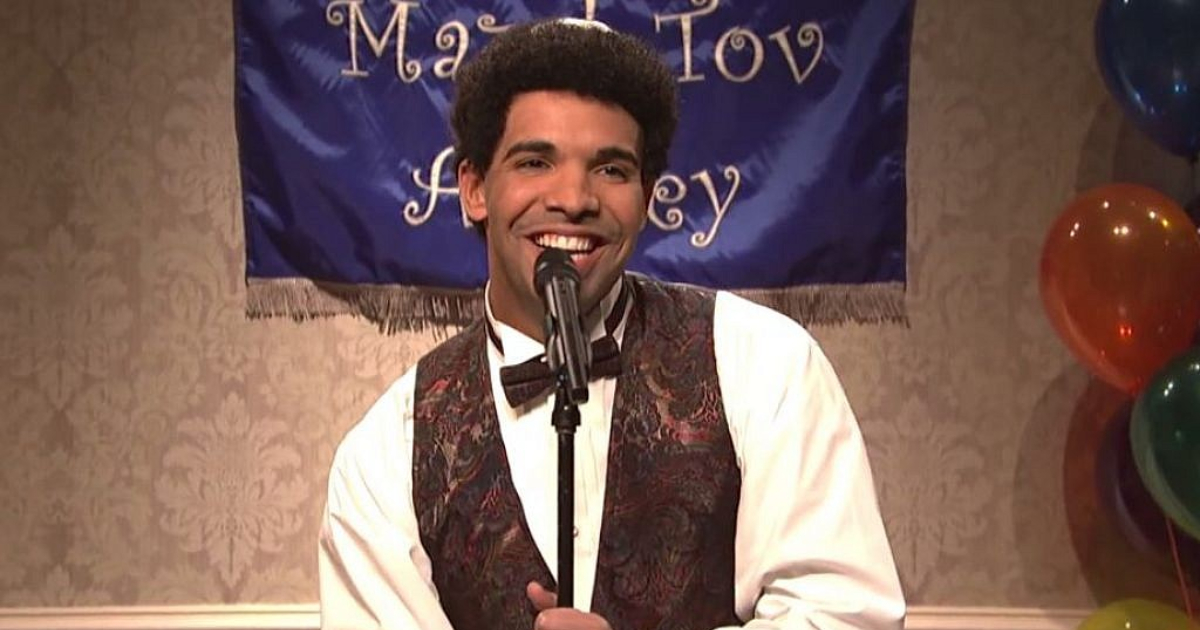
Drake remembers his bar mitzva — ‘as if it was yesterday’ Saturday Night Live sketch, 2014
Enter the Wu-Tang Clan: Five Percenters and Numerology
But perhaps no group has been as dedicated to promoting their faith as the Wu-Tang Clan, whose lyrics frequently reference the Nation of Gods and Earths, also known as the Five Percent Nation.
The Five Percenters consider themselves more of a cultural movement than a traditional religion, but their teachings often have a religious quality when delivered by artists like the Wu-Tang Clan. Founded in the 1960s by Clarence 13X, a former member of the Nation of Islam, the Five Percent Nation has a significant influence on the group and its affiliates.
Ghostface Killah directly references Clarence 13X in the song “Abduction,” rapping:
“Staten Island’s bayside of teachers Elijah / Thrown out the temple, non-calodic wit the father / Nickname’s Pudding, Clarence 13X before the Will Smith’s and limelight of Cuba Gooding”
This name-check highlights the importance of Clarence 13X within the Wu-Tang universe.
The Five Percent Nation’s core philosophy centers around a concept called “Supreme Mathematics.” This system assigns numerical values to represent different segments of society. The 85% represent those who are “dumb, deaf, and blind” to the truth. The 10% symbolize those in power who control the 85%. Finally, the 5% are the enlightened ones who strive to educate the masses.
Believers in this ideology see themselves as part of the chosen 5%, hence the name “Five Percent Nation.” Understanding these core beliefs helps unlock deeper meaning in the lyrics of the Wu-Tang Clan and other Five Percent Nation affiliates within Hip-Hop and Religion.
The 5% Nation influence goes beyond mere aesthetics and delves into the world of numerology and self-empowerment central to the 5% Nation belief system.
One key aspect of this influence is the use of specific numbers. The Nation assigns profound meaning to numbers like 7, representing the idea that every believer embodies a spark of divinity, the “Asiatic Black Man” who played a role in creation. Here, Allah becomes an acronym for “Arm, Leg, Leg, Arm, Head” rather than a traditional name for God. This belief system further distinguishes men as “Gods” and women as “Earths,” the life-givers. Numbers 1, 2, and 3 also hold significance, symbolizing knowledge, wisdom, and understanding, respectively.
These concepts permeate the music of Wu-Tang Clan affiliates like GZA, Raekwon, and Killah Priest. Simple greetings like “Peace God” and references to the “God of 7” pepper their lyrics. This can lead listeners to perceive them as inherently “conscious” rappers, when in reality they are simply reflecting their chosen belief system.
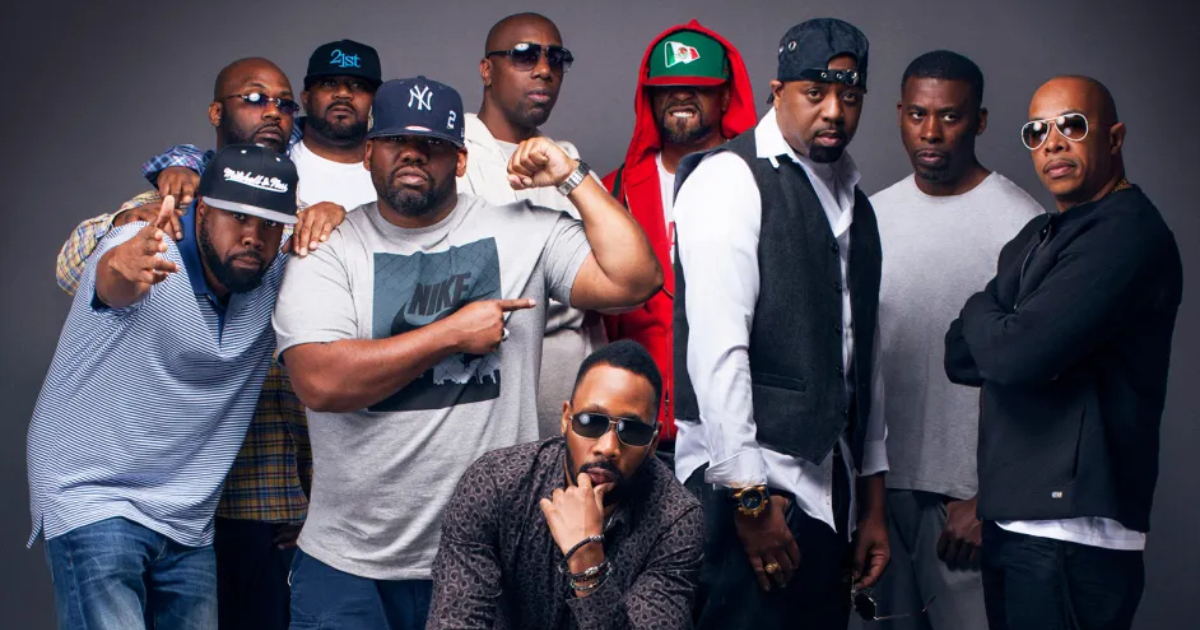
The members of Wu-Tang Clan, 2017
From Niche to the Masses
This isn’t inherently different from rappers like 2Pac referencing scripture or Kevin Gates quoting the Quran. Faith has always been a cornerstone of society, shaping morality and worldviews. Artists are no exception, and some might even be considered modern-day preachers.
The emphasis on message over technical rapping prowess often relegated Holy Hip-Hop to a niche audience. However, the 21st century saw a shift. More lyrically adept and battle-oriented rappers emerged within the genre, pushing the boundaries with labels like Cross Movement and Reach Records. These efforts have significantly increased the visibility of Hip Hop and Religion beyond church walls.
While still largely underground, Holy Hip-Hop now boasts a vibrant ecosystem – annual awards shows, festivals, online archives, dedicated radio programs, and even ministries. The rise of gospel radio stations and shows like “The Spirit of Hip-Hop” further exposed mainstream audiences to this unique subgenre. Even major award ceremonies like the Grammys and the Dove Awards have expanded their categories to include Christian rap.
Ultimately, rappers are storytellers, and their stories are often rooted in faith. The Christian influence is undeniable, evident in the ubiquitous crucifix pendants and Jesus iconography adorning rappers of all backgrounds. These choices reveal the deep connection many rappers have with their faith, with the bling symbolizing success intertwined with the gratitude they feel for their beliefs guiding them.
The Paradox of Faith and Hustle in 50 Cent’s Music
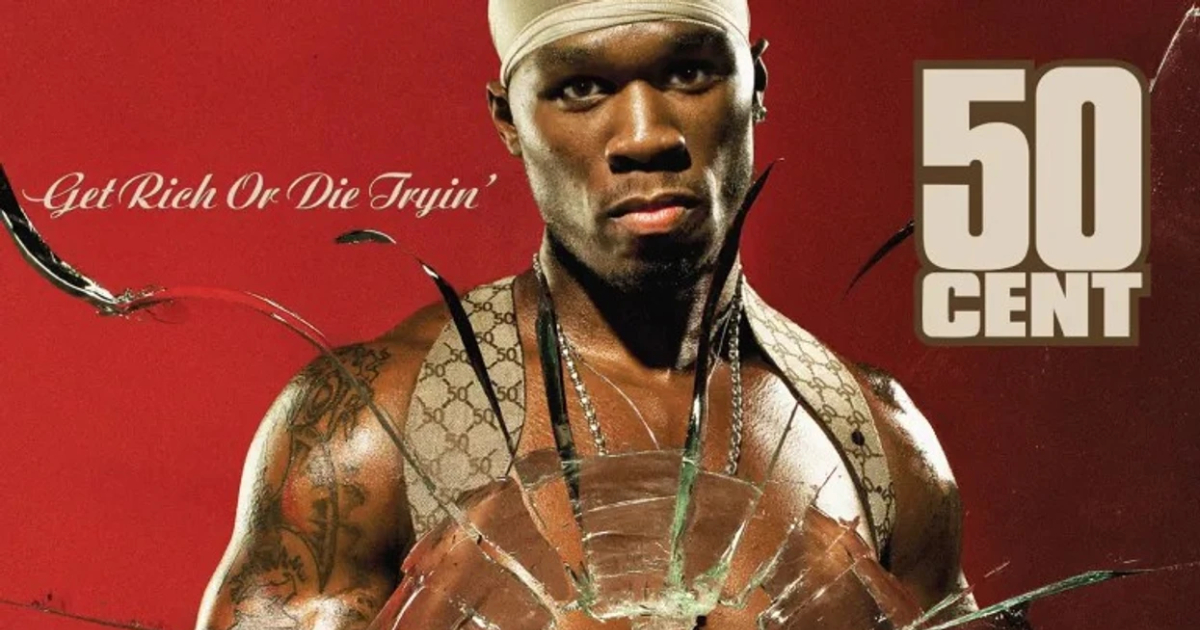
50 Cent’s Album Cover Get Rich or Die Tryin’, 2003
50 Cent, an undisputed titan of rap for over two decades, has always presented a complex persona. Early in his career, the rapper was almost inseparable from his diamond-encrusted crucifix. This symbol of faith took center stage on the cover of his breakout album, “Get Rich or Die Tryin’,” where 50 stands defiant behind shattered glass, the cross gleaming defiantly.
However, this outward expression of religiosity is just one facet of 50 Cent’s lyrical world. Throughout “Get Rich or Die Tryin’,” he offers glimpses of a personal connection with God that runs deeper than bling. In the introspective track “Patiently Waiting,” he raps:
“I’m innocent in my head, like a baby born dead / Destination heaven, sit and politic with passengers from 9/11 /The Lord’s blessings leave me lyrically inclined / S***, I ain’t even trying to shine”
This is not an uncommon theme in Gangsta Rap. Rappers like 50 Cent acknowledge their immersion in a violent world, often resorting to drug dealing and crime for survival. Yet, they also express a paradoxical faith, thanking God for both the hardships they’ve endured and the success they’ve achieved. This juxtaposition reflects a broader human tendency to seek solace and justification in religion, even amidst morally ambiguous circumstances.
The ostentatious jewelry worn by many rappers becomes a symbol of this complex dynamic. It’s a trophy, a declaration that they’ve navigated a brutal reality and emerged triumphant. This echoes the lessons often instilled in childhood religious upbringing – overcoming trials strengthens one’s faith. Understanding the interplay of faith and hardship is crucial to appreciating the depth of 50 Cent’s music, and indeed, gangsta rap as a whole. The music throbs with the undeniable influence of religion, even as it depicts the harsh realities of street life.
Lecrae: Bridging the Gap Between Sacred and Secular
Houston-born rapper Lecrae stands as a pioneer in Christian Hip-hop, achieving mainstream recognition that was unimaginable for the genre before him. His talent and production prowess are undeniable, evidenced by his 2012 Grammy win for Best Gospel Album (“Gravity”). Lecrae’s accolades, however, extend beyond gospel categories. He was named Best Artist of the Year at the 46th Dove Awards and Best Gospel Artist at the 2015 BET Awards.

Christian Rapper Lecrae, 2015
While these awards highlight the religious audience for gospel rap, Lecrae’s recent accomplishments, including performances on “The Tonight Show Starring Jimmy Fallon” and the BET Hip-Hop Awards, have brought the genre unprecedented mainstream exposure. This success has even led Lecrae and others to question the lines traditionally drawn between religious and secular Hip-Hop.
Lecrae’s song “Jesus Muzik” (2006) exemplifies the artist’s ability to challenge expectations. The track opens with Lecrae cruising in his convertible, blasting his music. The lyrics describe the bewildered reactions he receives: “Ridin’ wit’ my top down listenin’ to this Jesus music.” The song’s smooth instrumentals are indistinguishable from mainstream Hip-Hop, but the message is far from typical. Lecrae plays on the surprise factor, contrasting the religious content with the genre’s usual bravado and profanity.
He isn’t afraid to confront issues within the church itself. His music tackles themes of hypocrisy and judgmentalism, evident in lines from “Gravity” The title track includes the scathing critique: “The pastor is so corrupt, it’s hard to ride with his message.” Lecrae’s honesty and willingness to challenge the status quo are a major part of his appeal.
While Lecrae is often recognized as a pioneer in Christian Hip-Hop, other rappers like Ambassador, Da’ T.R.U.T.H., and Grits have also found success within the genre.
Da’ T.R.U.T.H.’s 2007 song “Who Am I?” delves into the internal struggle of navigating life’s choices. The lyrics explore the pull between following biblical principles and succumbing to worldly temptations. The song portrays the speaker grappling with discerning the right path.
Similarly, Grits’ 2002 track “My Life Be Like” offers a testament to God’s guiding hand. The song chronicles a journey from frustration and hardship to a place of peace and freedom, highlighting the transformative power of faith.
Perhaps the most surprising name in faith-based rap is Snoop Dogg. Yes, the marijuana-loving rapper known for his braggadocious lyrics about partying and gang life, made a dramatic shift with the release of his 2018 gospel album, “Bible of Love.”
Snoop challenged the traditional interpretations of the Bible, particularly those emphasizing wrath and violence. He described his project as a departure from a “Bible of hate and love” towards a message of “straight love.”
In an interview, he emphasized his longstanding faith. “I’ve always referred to my Savior Jesus Christ on my records,” he said. He champions inclusivity within the church, advocating for a welcoming approach to those seeking redemption. “Church is supposed to welcome sinners,” he argues. His message is one of acceptance and guidance, not condemnation.
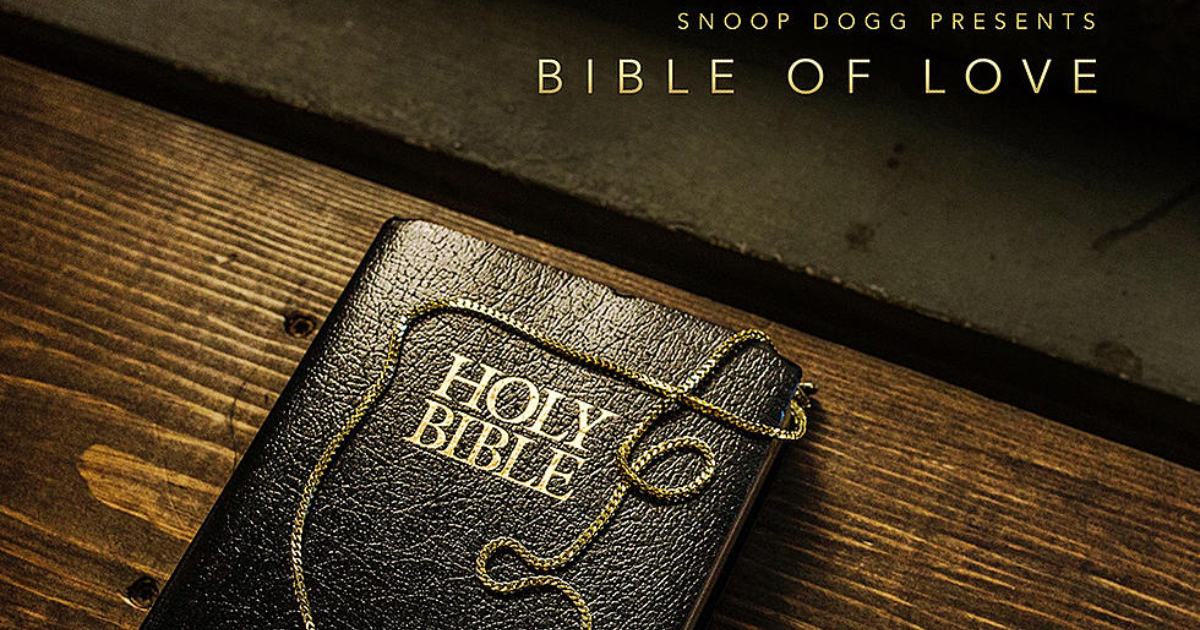
Album Cover of Bible of Love (also known by its full title Snoop Dogg Presents Bible of Love), 2018
Hip-Hop and Religion: A Match Made in Heaven and Streets
As we can notice, a growing wave of artists are infusing their music with themes of faith and redemption, creating a unique blend of “in-your-face” narratives and “amazing grace.”
This trend isn’t without its complexities. The tragic passing of DMX in 2021, reportedly from a drug overdose, highlighted the tension between the often-celebrated street lifestyle and religious devotion. However, Snoop Dogg’s touching tribute to his friend, where he spoke of finding comfort in DMX’s “transition to a better place,” exemplifies the power of faith within the genre.
Is this a passing phase? Dr. Roy Whitaker predicts a lasting presence of Hip-Hop and Religion in secular and religious spaces, even questioning if it might one day hold the same power as gospel music. Will we be hearing Hip-Hop beats echoing in congregations twenty years from now? Who knows… probably.
